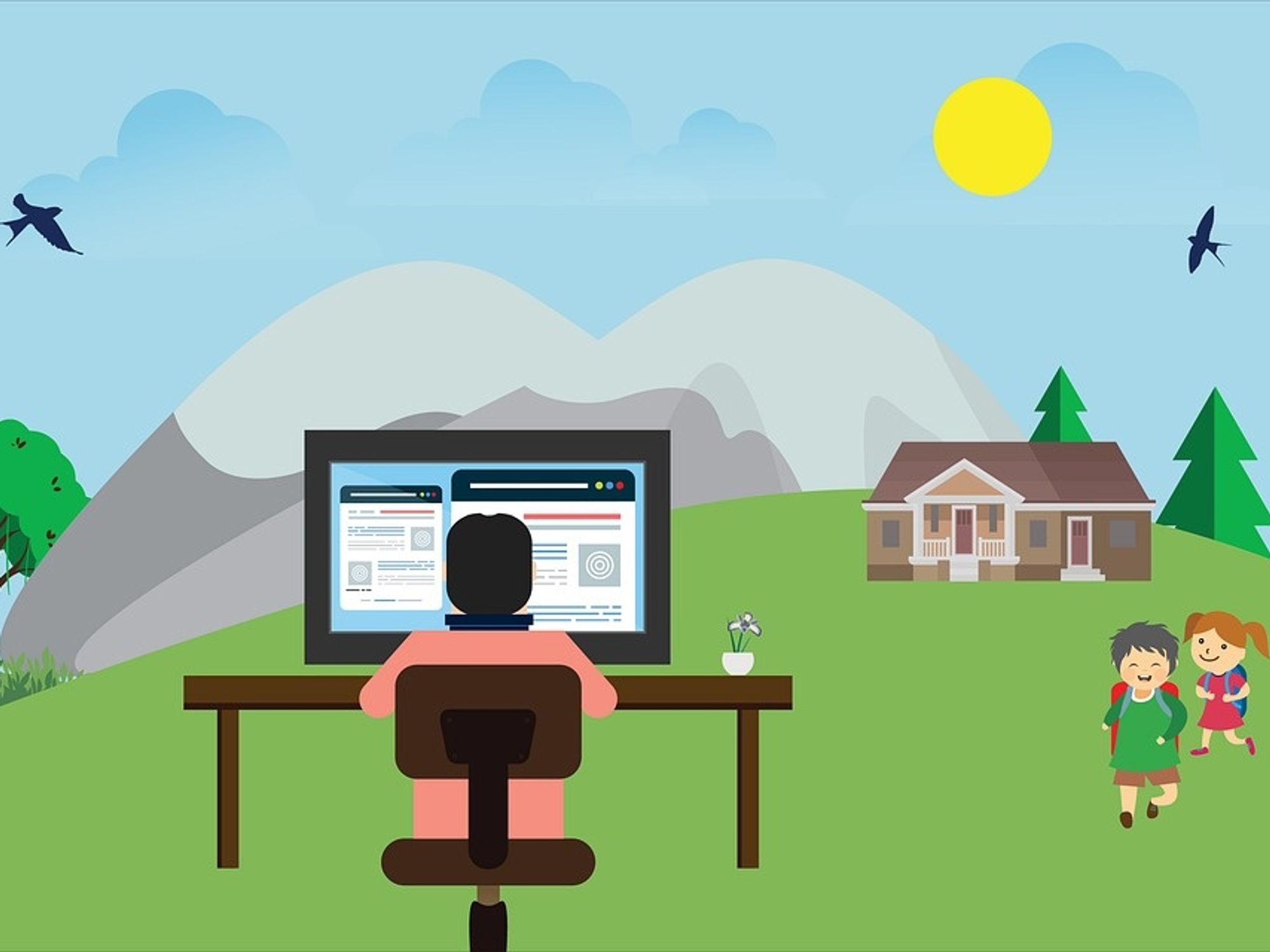Over-Communication and the Value of Slack Emojis; How to Maintain Culture When Employees go Remote
Ben Bergman is the newsroom's senior finance reporter. Previously he was a senior business reporter and host at KPCC, a senior producer at Gimlet Media, a producer at NPR's Morning Edition, and produced two investigative documentaries for KCET. He has been a frequent on-air contributor to business coverage on NPR and Marketplace and has written for The New York Times and Columbia Journalism Review. Ben was a 2017-2018 Knight-Bagehot Fellow in Economic and Business Journalism at Columbia Business School. In his free time, he enjoys skiing, playing poker, and cheering on The Seattle Seahawks.

When you're working remotely, more is more.
"There's just no downside to over-communication," said Matt Hoffman, a partner and head of talent at the venture capital firm M13. "It's not one size fits all. There are many different organizations. But the one standard is to always communicate more often, more clearly, and more crisply."
Long before COVID-19 made working at home fashionable and increasingly mandatory, Hoffman tried to instill a strong culture at M13 that thrives even though teams are bicoastal, with offices in Santa Monica and New York and a partner in San Francisco. Hoffman says it is key to still do as much face-to-face contact as possible, especially because M13 is a relatively new firm with many employees who have been together for less than a year. The firm normally holds monthly or bimonthly "dock-in" weeks where everyone comes together in one location.
"That may not be relevant to the current situation but when you do have the opportunity to supplement remote work with real life experiences, try to take advantage of that," said Hoffman.
As more offices go virtual for the foreseeable future, Hoffman lead a webinar Thursday afternoon on how to manage remote teams. He shared some of his biggest tips with dot.LA.
What do you think are the most important things to remember when you have employees who don't see each other face to face?
The first one is to over communicate because so much of traditional communication is nonverbal. You lose that when it's just over email, slack or even on video. Overemphasizing crispness and clarity is so important, even silly things like emojis. Emojis help. They actually provide emotional context to some of the words. For managers, it's about setting clear expectations, checking in regularly for your team and then for regular employees, making sure that everyone is aware of what you're doing
Have you seen an example where something has been adversely affected because you're not in person and not doing that over communicating?
Traditionally there is just a lot of confusion or uncertainty and you don't trust your team. If people don't know what you're up to because you're not there, they create narratives or questions in their head. That's really unhelpful, especially for early stage startups where the pace of work is so quick. You really need to get in lock step.
You guys use Slack a lot. How does it help you?
I think it's valuable for creating that bond that it is just not possible over phone or email. Slack just provides a much healthier way of creating those more informal conversations when you're not in person. Another benefit of Slack is there is a record of it which isn't there when you're talking in person, so being really smart and building up a culture over time where you understand when it's appropriate to do different things is very unique to each company, but it's a really healthy process for companies to figure out. They can build on their onboarding to help new people understand how the culture works. It requires some intentional thought about how you want to communicate. That doesn't just happen by accident, at least in a really high performing company.
What are the pitfalls of Slack?
Other than the random time suck of going on random channels? (laughs) I think the biggest one we with with any kind of online communication is the potential to lose context. Again, you want to over communicate but you want to do in a way where you're not just living your life out of Slack.
Do you tell people sometimes that they should just pick up the phone?
We do. We also do a lot of video conferencing. At some point if you have 30 thread conversation on Slack, it might actually be better just to call up the person.
What are you doing differently at M13 as a result of COVID-19?
We're obviously not convening as a large group anytime soon. We're certainly not having any candidate come into the office. We're doing all our interviewing remotely and even though we're not yet entirely working from home, we wanted to start with candidates because they don't always feel like they have the same power in these decisions. We want to give them the ability to not travel as much. We haven't closed our offices yet. We're small enough that there's not a large capacity and we still think there is real value in the face-to-face work that we do.
- How Will Offices Change After Coronavirus? - dot.LA ›
- How Will Offices Change After Coronavirus? - dot.LA ›
- How to Build Company Culture In a Work From Home World - dot.LA ›
- Column: Adjusting to the New Normal When Office Life Resumes - dot.LA ›
- Column: Adjusting to the New Normal When Office Life Resumes ›
Ben Bergman is the newsroom's senior finance reporter. Previously he was a senior business reporter and host at KPCC, a senior producer at Gimlet Media, a producer at NPR's Morning Edition, and produced two investigative documentaries for KCET. He has been a frequent on-air contributor to business coverage on NPR and Marketplace and has written for The New York Times and Columbia Journalism Review. Ben was a 2017-2018 Knight-Bagehot Fellow in Economic and Business Journalism at Columbia Business School. In his free time, he enjoys skiing, playing poker, and cheering on The Seattle Seahawks.





 Image Source: Perelel
Image Source: Perelel